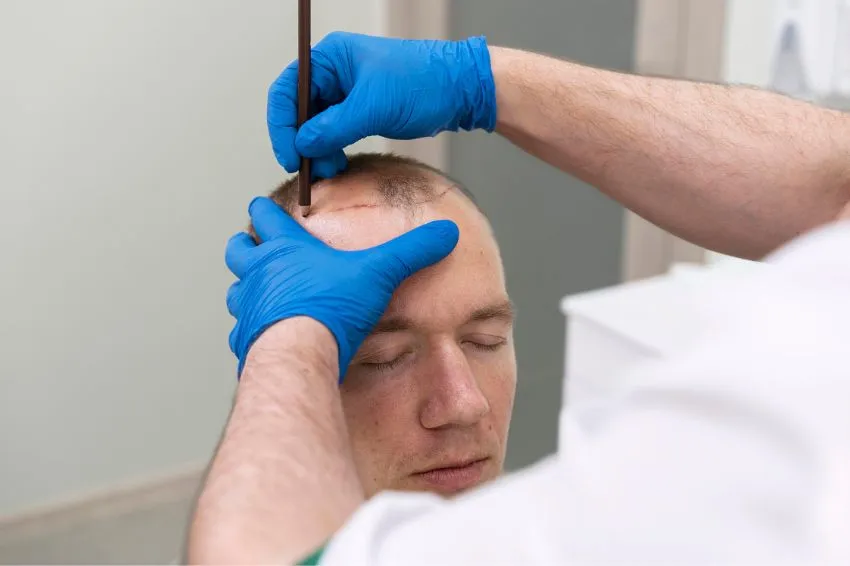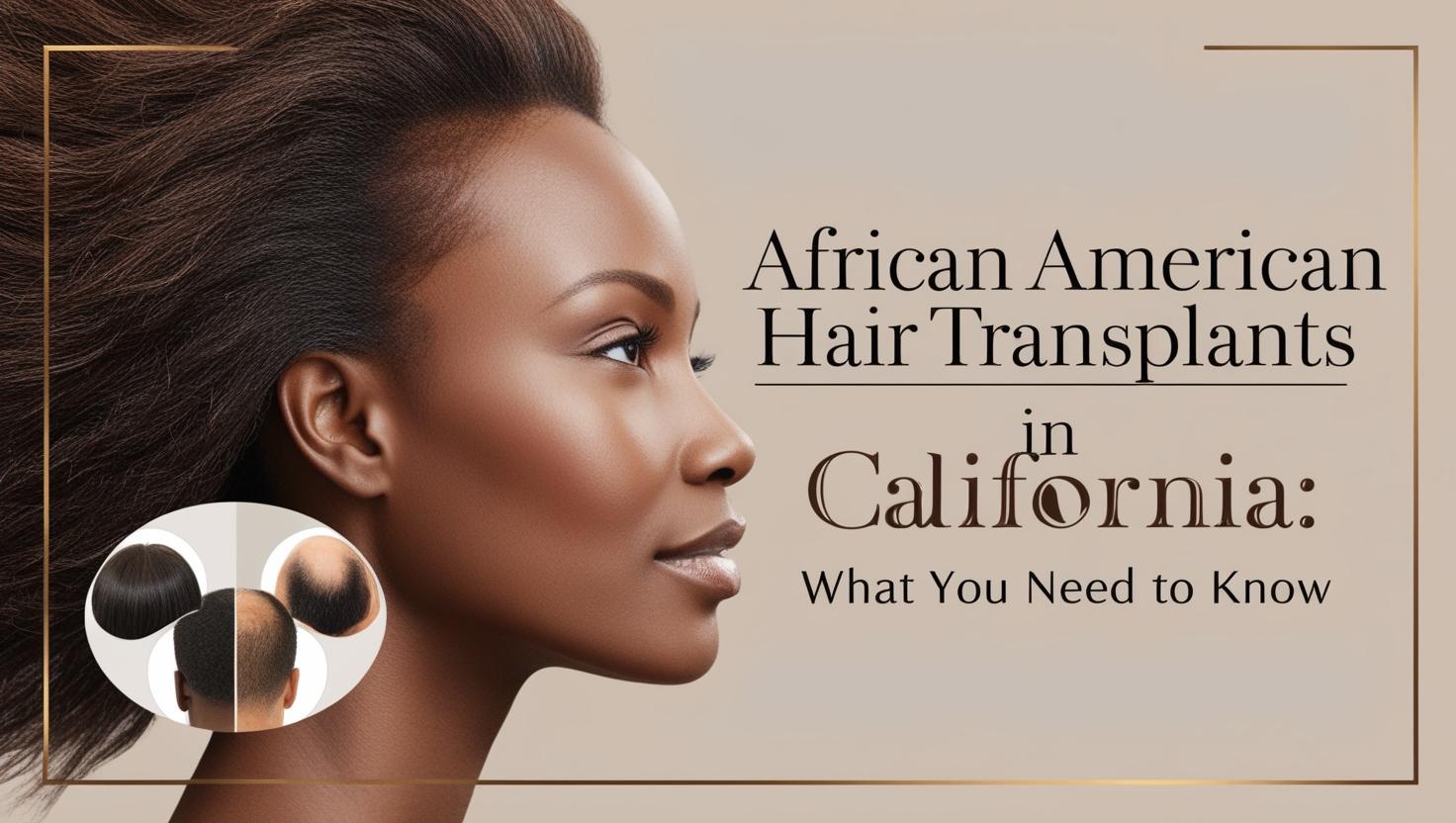Hair loss affects millions of people, but for African American men and women, it comes with unique challenges. The natural texture of curly and coily hair, combined with darker skin tones, means that hair restoration requires an experienced specialist and a customized approach.
If you’re in Oakland, California, and exploring hair transplants to restore your natural hairline, this guide will help you understand your options, what to expect, and how to find the right clinic for your needs.
Why African American Hair Requires Specialized Expertise
African American hair is beautiful, strong, and rich in texture. However, these same characteristics can make transplant procedures more complex compared to straight hair.
Key Challenges:
- Curved (C-shaped) Hair Follicles: More prone to damage during extraction.
- Tightly Coiled Texture: Requires careful handling to ensure the hair grows naturally after transplant.
- Risk of Keloids: Some individuals with darker skin are prone to thick, raised scarring.
- Scalp Sensitivity: Darker skin can show discoloration or visible scars if not treated properly.
Because of these factors, it’s crucial to choose a board-certified hair restoration specialist with experience treating African American patients.
Causes of Hair Loss in African American Men and Women
Understanding why you’re losing hair is the first step to choosing the right treatment.
Common Causes Include:
- Genetics (Male and Female Pattern Baldness): Inherited hair loss patterns.
- Traction Alopecia: Hair loss from tight hairstyles like braids, weaves, and dreadlocks.
- Central Centrifugal Cicatricial Alopecia (CCCA): Scarring alopecia often seen in African American women.
- Medical Conditions: Thyroid disease, lupus, or iron deficiency.
- Stress and Poor Scalp Health: Can weaken follicles over time.
The good news? If you have enough healthy donor hair (usually from the back or sides of your head), a hair transplant can restore thinning areas naturally.
What is an African American Hair Transplant?
A hair transplant moves your own healthy hair follicles from the donor area to thinning or bald areas. The transplanted hair retains its curl pattern, texture, and natural growth cycle.
There are two main techniques:
1. Follicular Unit Extraction (FUE)
How it Works:
- Individual hair follicles are removed with a small, precise punch tool.
- Grafts are carefully prepared and implanted in the thinning areas.
- No linear scar is left behind.
Benefits:
- Ideal for short hairstyles.
- Lower risk of visible scarring.
- Faster healing time.
- Excellent for Afro-textured hair because it allows customized placement and handling.
Considerations:
- Takes longer to perform.
- Typically more expensive than FUT.
2. Follicular Unit Transplantation (FUT)
How it Works:
- A strip of scalp is removed from the donor area.
- Individual grafts are prepared under a microscope.
- The donor area is closed with sutures, resulting in a linear scar.
Benefits:
- Can harvest more grafts in a single session.
- Sometimes more cost-effective.
Considerations:
- Not ideal if you wear very short hair.
- Higher risk of visible scarring, especially in darker skin tones.
Why Most Patients Choose FUE in Oakland:
FUE is preferred because it produces natural results, leaves no linear scar, and better accommodates curly follicles.
Finding the Right Hair Transplant Specialist in Oakland, California
Oakland has several hair restoration clinics, but very few have deep experience with African American patients. Here’s what to look for:
What to Ask During a Consultation:
- Do you specialize in African American or textured hair restoration?
- How many similar cases have you performed?
- Can I see before-and-after photos of African American patients?
- Do you offer FUE with small punch sizes appropriate for curly follicles?
- What is your approach to minimizing scarring or pigmentation changes?
About Dr. John Diep: A Leader in African American Hair Restoration
If you’re in Oakland or the San Francisco Bay Area, Dr. John Diep is one of the most trusted names in hair restoration for textured hair.
✔ Board-Certified Hair Transplant Surgeon (ABHRS)
✔ 20+ Years of Experience in Natural Hairline Design
✔ Specialist in African American & Curly Hair Transplants
✔ Featured in Newsweek as a Top Hair Loss Doctor
Dr. Diep’s skill in designing soft, natural hairlines that complement facial features and curl patterns has made him a preferred choice among patients seeking discreet, undetectable results.
The Hair Transplant Process: What to Expect
1. Initial Consultation
Your surgeon will examine your scalp, discuss your goals, and create a customized treatment plan.
2. Pre-Procedure Preparation
You’ll be given instructions on washing your hair, avoiding certain medications, and preparing for the day of surgery.
3. The Procedure (FUE)
- Local anesthesia is applied to keep you comfortable.
- Follicles are carefully harvested.
- Each graft is implanted to match your natural hair angle and curl pattern.
4. Recovery
- Mild swelling and redness are normal.
- Most patients return to work within 3–5 days.
- Tiny scabs will fall off within 7–10 days.
5. Results
- Transplanted hair sheds initially (shock loss).
- New growth starts within 3–4 months.
- Full results appear over 9–12 months.
How Much Does an African American Hair Transplant Cost in Oakland?
Pricing depends on the number of grafts needed, the technique used, and the surgeon’s expertise. Remember: Choosing an experienced surgeon is worth the investment to avoid poor results or corrective procedures later.
Before and After: What Results Can You Expect?
When performed by a skilled surgeon, African American hair transplants look completely natural. The curl pattern matches your existing hair, and the new hairline is designed to complement your face.
Important:
- Patience is key—results take time.
- Final density depends on your donor hair and goals.
- Additional sessions can be planned for more coverage.
FAQs About African American Hair Transplants in Oakland
1. Can African American women get hair transplants for traction alopecia?
Absolutely. Hair transplants can restore edges and fill in areas thinned by tight styles like braids or weaves.
2. Will the new hair match my curl pattern?
Yes. Because it’s your own hair, the new growth keeps the same texture and curl.
3. What if I’m prone to keloid scarring?
Inform your surgeon during your consultation. An experienced doctor will adapt the technique to reduce risk.
4. When can I wear braids or tight hairstyles again?
You should wait 3–6 months before applying tension to the new grafts.
5. Is FUE painful?
Local anesthesia ensures you feel minimal discomfort. Some soreness or swelling may occur afterward but typically resolves within a week.
Final Thoughts: Reclaim Your Confidence
Hair loss doesn’t have to define your look or confidence. With the right surgeon and a personalized plan, you can restore your hair naturally and permanently.
If you’re in Oakland or the greater Bay Area, Dr. John Diep’s expertise in African American hair transplants makes him one of the top choices for achieving natural results you’ll love.
Ready to start your hair restoration journey?
Schedule a consultation and discover what’s possible.



